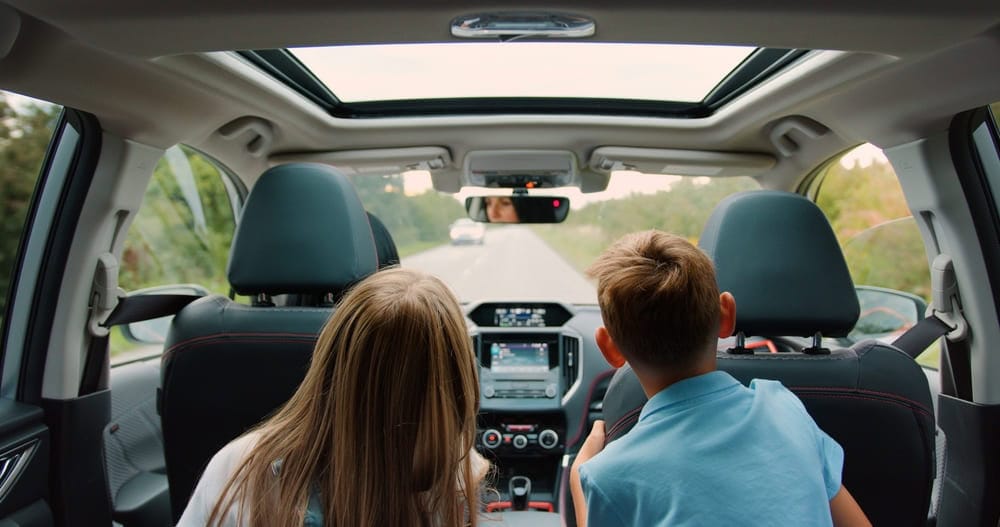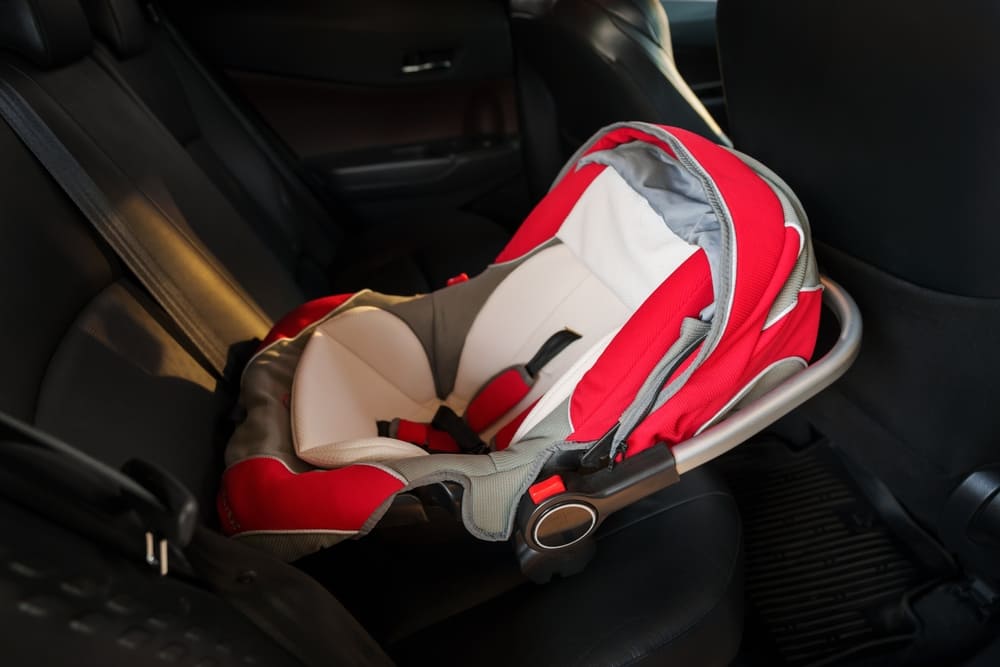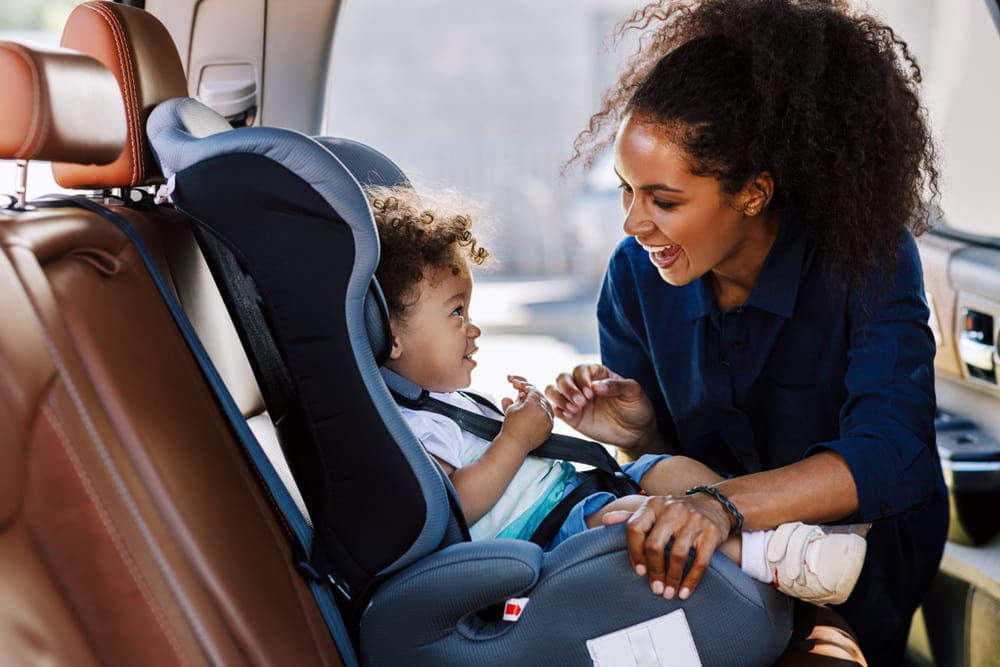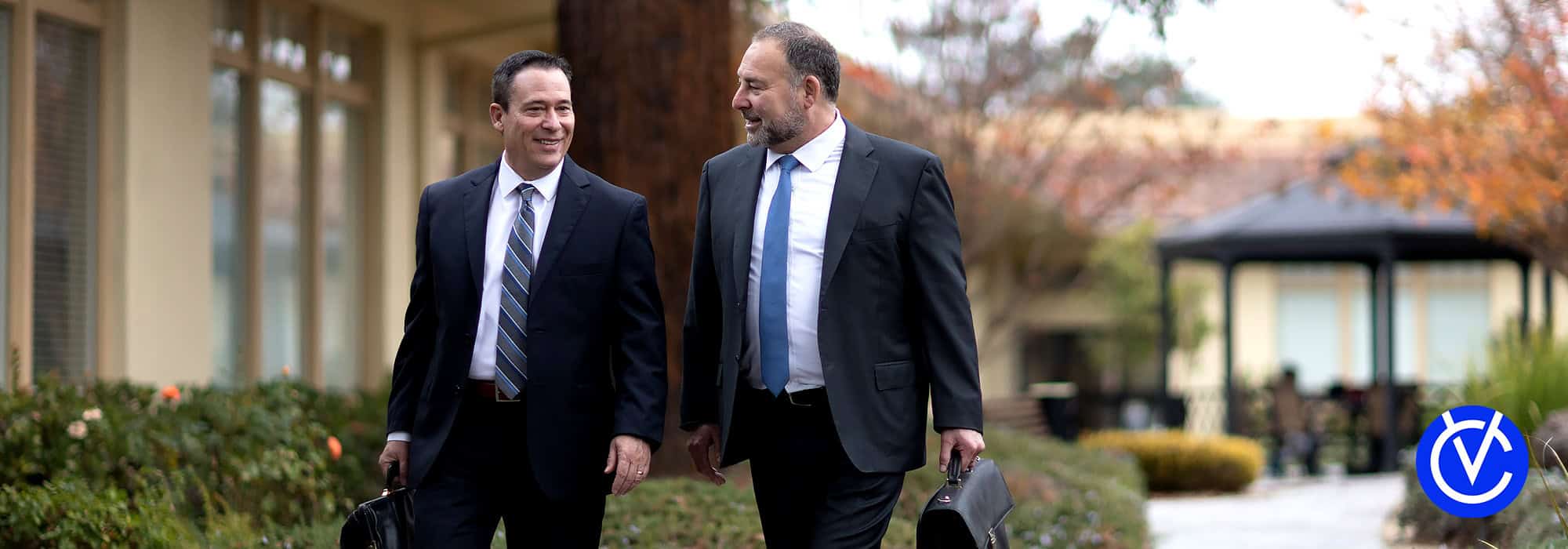As parents, our top priority is keeping our children safe, especially when it comes to traveling in a vehicle. But with so many rules and regulations surrounding car seats and child safety, it’s easy to feel overwhelmed or unsure about what’s required.
At Caputo & Van Der Walde, we understand how important it is to protect your child while staying compliant with California’s child safety laws. As a law firm dedicated to personal injury cases, we’ve seen firsthand the devastating consequences of car accidents, particularly when children are involved. That’s why we help families understand and follow the state’s regulations to ensure their children’s safety.
In this blog post, we’ll break down California’s laws regarding children sitting in the front seat, explain the safety concerns behind these rules, and address common misconceptions. By the end, you’ll have a clear understanding of when your child can legally and safely sit in the front seat—and how Caputo & Van Der Walde can assist you in navigating these important legal requirements.
California has some of the strictest child passenger safety laws in the country, and for good reason. These laws are designed to protect children from serious injuries in the event of a car accident. Understanding these regulations is essential for parents and guardians to ensure their child’s safety while also complying with the law. According to California Vehicle Code Section 27360, the rules for children sitting in the front seat are as follows:
In California, children under the age of 8 are required to ride in the rear seat of a vehicle in an appropriate car seat or booster seat. This law is based on extensive research showing that the rear seat is safer for young children. The rear seat provides a buffer from the impact of front-end collisions, which are the most common type of car accident.
Parents should always refer to the car seat’s manual to ensure the car seat is installed correctly and meets the child’s size and weight requirements. Proper installation is critical to the effectiveness of the car seat in protecting your child during a crash.
Additionally, children in booster seats must use a properly fitting seat belt, with the lap belt snug across their upper thighs and the shoulder belt crossing their chest and shoulder—not their neck or face.

For children under the age of 2, California law mandates the use of a rear-facing car seat unless the child weighs 40 pounds or more or is at least 40 inches tall. Rear-facing car seats are designed to provide critical support for a child’s head, neck, and spine in the event of a collision.
The rear-facing position cradles the child’s body and distributes the force of a crash more evenly, reducing the risk of severe injuries. Parents should always follow the car seat’s manual to ensure the seat is installed at the correct angle and securely fastened. It’s also important to avoid placing a rear-facing car seat in the front passenger seat, as the deployment of an airbag can cause serious harm to an infant or toddler.
While California law allows children aged 8 and older to sit in the front seat, it’s generally recommended that they continue to ride in the rear seat until they’re at least 13 years old.
This recommendation is based on safety guidelines from the American Academy of Pediatrics (AAP) and the National Highway Traffic Safety Administration (NHTSA), which emphasize that the rear seat is the safest place for children.
If a child aged 8 or older must sit in the front passenger seat, parents should take extra precautions to minimize risks:
Ensure the child is using a properly adjusted seat belt. The lap belt should lie snugly across the upper thighs, and the shoulder belt should cross the chest and shoulder without touching the neck or face.
Move the front passenger seat as far back as possible to create distance from the airbag. Airbags deploy with significant force, which can cause serious injuries to smaller passengers.
Confirm that the child meets the height requirement of at least 4 feet 9 inches to ensure the seat belt fits correctly.
Even if your child meets the legal requirements to sit in the front seat, it’s important to weigh the safety risks. The rear seat remains the safest option for children, as it provides better protection in the event of a crash.
California’s child passenger safety laws aren’t just about compliance—they’re about protecting your child’s life. By ensuring your child is in the correct car seat, booster seat, or seat belt for their age, height, and weight, you’re reducing their risk of injury in a car accident. Always consult the car seat’s manual for proper installation and usage, and prioritize the rear seat for as long as possible.
Understanding how to use the appropriate child restraint system can make all the difference in keeping your child safe on the road. If you’re ever unsure about your legal obligations or need assistance with child safety regulations, Caputo & Van Der Walde is here to help.

Although California law allows children aged 8 and older to sit in the front seat, there are additional factors to consider, such as height and weight. Airbags, which are designed to protect adults, can pose a serious risk to smaller passengers. For this reason, experts recommend that children meet the following criteria before sitting in the front seat:
Even if your child meets these requirements, it’s still safer for them to ride in the back seat. The back seat is statistically the safest place for passengers, especially children, in the event of a crash.
The emphasis on keeping children in the back seat isn’t just about following the law—it’s about protecting them from harm. Here are some key safety concerns to consider:
Airbags are designed to protect adults, but they can be dangerous for children. In a collision, an airbag deploys with tremendous force, which can cause serious injuries to a child’s head, neck, or chest. This is especially true for younger children who are smaller and lighter.
Studies have consistently shown that children are safer in the back seat. According to the Centers for Disease Control and Prevention (CDC), children under the age of 13 are 40% less likely to be injured in a crash when seated in the back.
Proper seatbelt fit is crucial for safety. In the front seat, seatbelts are designed for adult proportions, which means they may not fit a child correctly. A poorly fitting seatbelt can cause injuries to the neck or abdomen in a crash.
Despite the clear benefits of keeping children in the back seat, several misconceptions can lead parents to make unsafe choices. Let’s address a few of the most common myths:
“My child is tall for their age, so it’s fine for them to sit in the front.”
While height is an important factor, age and maturity also play a role. Even a tall child may not have the physical development needed to withstand the force of an airbag deployment.
“We’re just driving a short distance, so it doesn’t matter where my child sits.”
Most car accidents happen close to home. Even on short trips, it’s essential to follow safety guidelines and keep your child in the back seat.
“My car has advanced safety features, so my child is safe in the front seat.”
While modern vehicles are equipped with impressive safety technology, these features aren’t a substitute for proper seating arrangements. Airbags, for example, are still a risk for children, regardless of other safety features.
At Caputo & Van Der Walde, we’re not just personal injury attorneys—we’re advocates for safety and justice. If you have questions about California’s child safety laws or need legal advice following a car accident, we’re here to help. Here’s how we can assist you:
We’ll help you understand California’s car seat and child passenger safety laws so you can make informed decisions for your family.
If your child has been injured in a car accident, we’ll fight to hold the responsible party accountable and secure the compensation your family deserves.
Through resources like this blog, we’re committed to educating families about the importance of vehicle safety and legal compliance.
Our team has decades of experience handling personal injury cases, and we’re passionate about protecting the rights of children and families. If you’re unsure about your legal obligations or need guidance after an accident, don’t hesitate to reach out.

Following California’s child safety laws isn’t just about avoiding fines or penalties—it’s about protecting your child’s life. By ensuring your child is properly restrained and seated in the safest part of the vehicle, you’re taking a critical step to reduce their risk of injury in a crash.
Compliance with these laws also strengthens your position in the event of an accident. If another driver’s negligence causes harm to your child, demonstrating that you followed all safety regulations can be crucial in pursuing a personal injury claim.
When it comes to your child’s safety, there’s no such thing as being too cautious. Understanding and following California’s laws about when children can sit in the front seat is a vital part of protecting them on the road. While the law allows children aged 8 and older to sit in the front seat under certain conditions, the safest choice is to keep them in the back seat until they’re at least 13 years old.
Whether you need advice on child safety laws or legal representation after an accident, our experienced team is ready to help. Contact us today to learn more about how we can assist you—and let’s work together to keep your family safe.

As members of the Multi-Million Dollar Advocates Forum® and the Million Dollar Advocates Forum®, we have proven our ability to negotiate and litigate on behalf of our clients successfully. Retain us to put our tactical strategies to work for you. These skills are what make our legal team such a formidable opponent in any courtroom or negotiation setting.